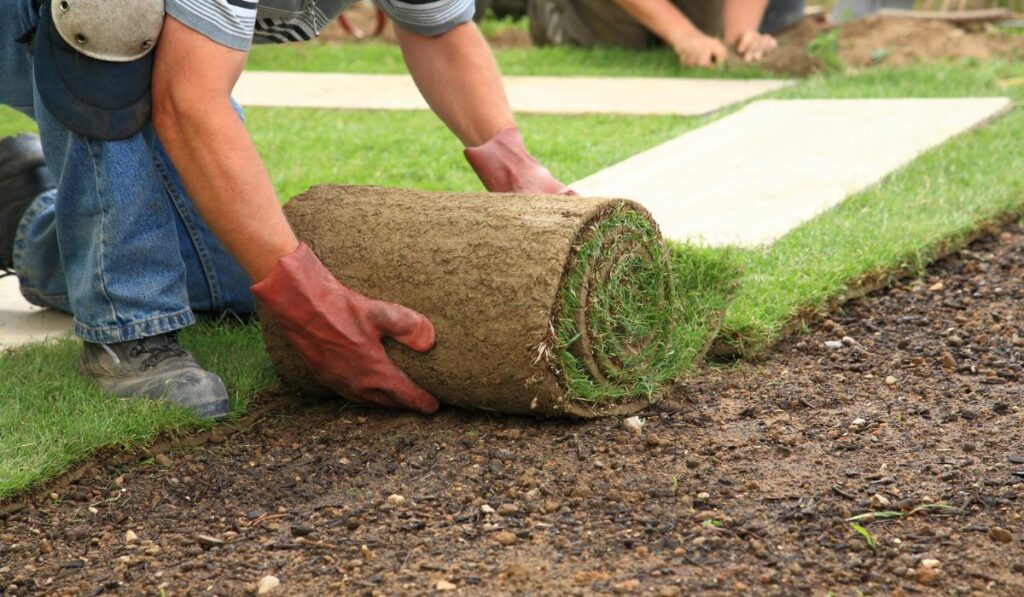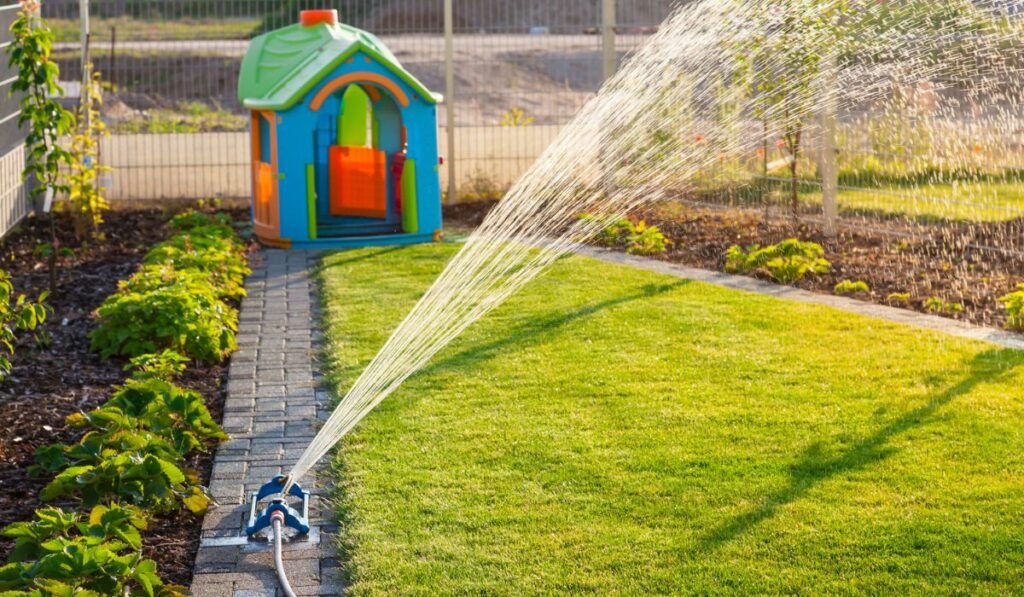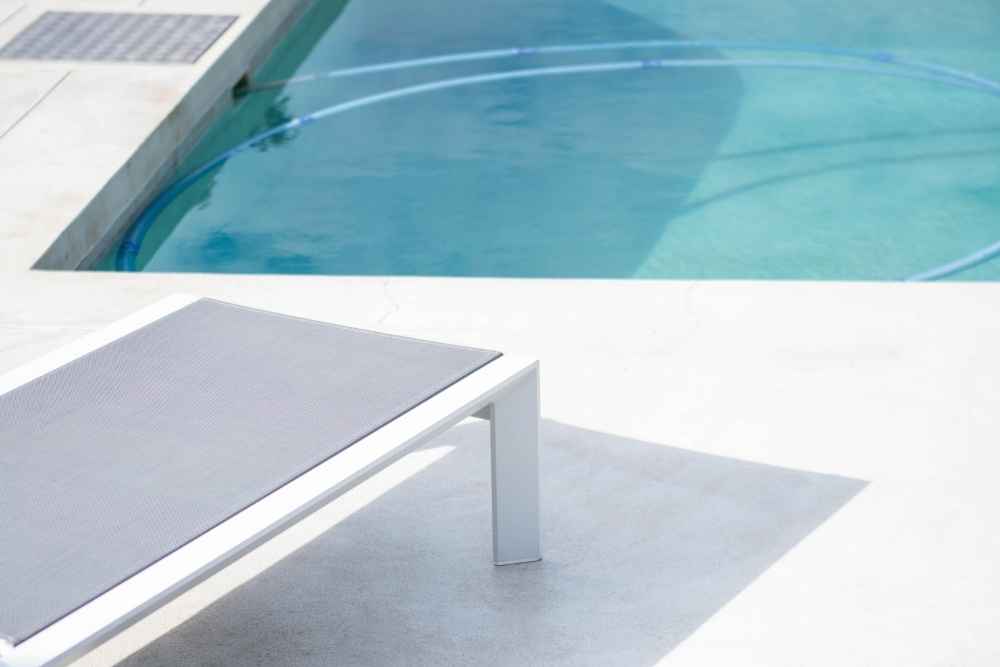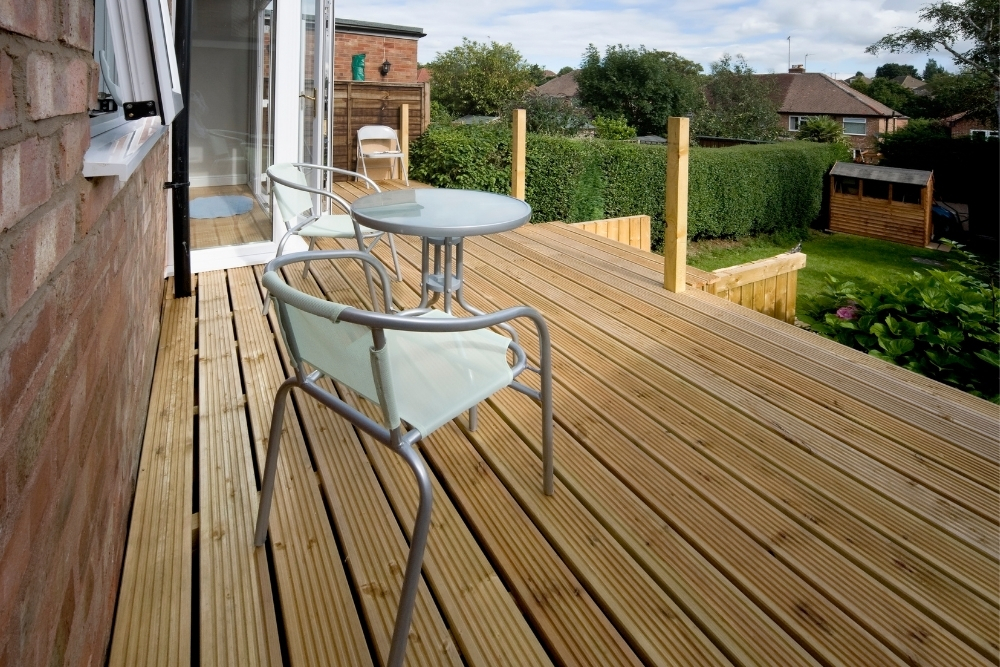While sod might appear ready for activities like foot traffic once it’s installed, that might not actually be the case. Sod needs time and care to establish a root system before you can start using it, and the best way to care for it is to give it the right amount of water it needs to grow.
Give ¼-inch of water to sod 2x a day in the first week after the installation, once in the morning (4-10 am) and once in the evening (4-6 pm). In the second week, give it ½-inch of water once a day. After two weeks, or once the sod establishes roots, give a total of 1.5 inches of water per week.
Let’s take a closer look what sod really is and how often you should water it once it is installed. We’ll also look at how you can tell if you gave sod too much water and how long you should wait after the installation to start walking on it.
What Is Sod?

Sod basically refers to grass along with part of the soil underneath it, held together in place by the root system. In some cases, biodegradable material is used to hold the two things together.
Sod is usually used on lawns for schools, businesses, private houses, sports stadiums, and golf courses. In addition to increasing your home’s values, sod has many other uses. For instance, it allows you to quickly establish a new lawn, especially in places where the seed is too expensive or will blow away. Similarly, sod can prevent erosion on new construction sites and hillsides.
How Often Should Sod Be Watered?
How often you should water sod changes according to the number of weeks that have passed after the installation. In general, the first two weeks are the most important, and it’s better if you have a consistent two-week watering schedule to prevent the sod from dying.
If you miss even one watering session, the heat and summer sun can cause individual parts of the sod to shrink from other parts, leaving behind a patchwork lawn. Insufficient water also causes dead zones, usually in the most sloped and sunniest parts of the lawn. This is why it’s important you stick to a schedule.
And maybe you already know how you’re going to do this watering, but consider buying one or 2 oscillating sprinklers (on Amazon) to best imitate the natural rainfall that grass (and all plants) have evolved to work with the most easily.
Week One
For the very first week after installation, you need to give the sod ¼-inch of water two times a day. The first watering session should be early in the morning, preferably between 4 and 10 am and the second session should be late afternoon/early evening between 4 and 6 pm.
Constant hydration will help the grass develop new feeder roots, which, in turn, will ensure a more resilient and deeper lawn. Once the week ends, pull back the corners of some pieces of the sod and see if you can spot white roots growing in the soil below.
Week Two
In the second week, you need to give half an inch of water once every day. It’s better if you continue to water the grass early in the morning, but remember that it’ll take much longer for the roots to grow than before. If you give all the water at once and let it dry throughout the day, it’ll encourage the young roots to extend deeper into the soil.
Doing so also makes sure that the grass is more drought-tolerant and encourages it to look for water at much greater depths. Towards the end of the week, pieces of sod should start to knit together and you shouldn’t be able to pull the corners.
After Two Weeks Have Passed
Once the sod establishes deep roots and the edges grow together, you can move to a more typical watering pattern. To ensure healthy growth, make sure you give your lawn 1.5 inches of water each week (including both irrigation and rain). If there’s no forecast for rain, give half an inch of water to the sod three times a week.
How to Tell if You’ve Overwatered Your Sod

Even though you need to give your new lawn a good amount of water, it’s still quite easy to go overboard. Excess water can cause rot and prevent root growth. Luckily, it’s easy to spot when you’ve overwatered the sod. Early signs of overwatering include rotting grass and brown discolorations.
If you see puddles on the lawn or if it seems like it’s holding water, you need to give it a little time to dry. Similarly, if the lawn feels spongy and water comes out as you step on it, it’s a clear indication that you’ve given too much water, and you need to adjust the watering schedule a bit to let the water drain out.
How Long Should You Wait to Walk on Sod?
Generally, you should wait for two weeks before you walk on sod, but this also depends on when the lawn takes root. You should only walk on sod once it has established itself and you can easily check that by lifting a corner of one of the sod pieces very gently. If the roots aren’t fully developed, you won’t feel any resistance when lifting the corner.
If you experience resistance and find it difficult to lift the sod, that means the root system is properly developed. Make sure you try lifting the corner of 2-3 sod pieces present in different parts of the lawn to make sure the whole surface has established roots.





![How Often Do You Need To Water Sage? [+ Growing Tips] How Often Do You Need To Water Sage? [+ Growing Tips]](https://yourdiybackyard.com/wp-content/uploads/2022/09/Fresh-herbal-sage-in-a-plant-pot-in-the-garden-150x150.jpg)


